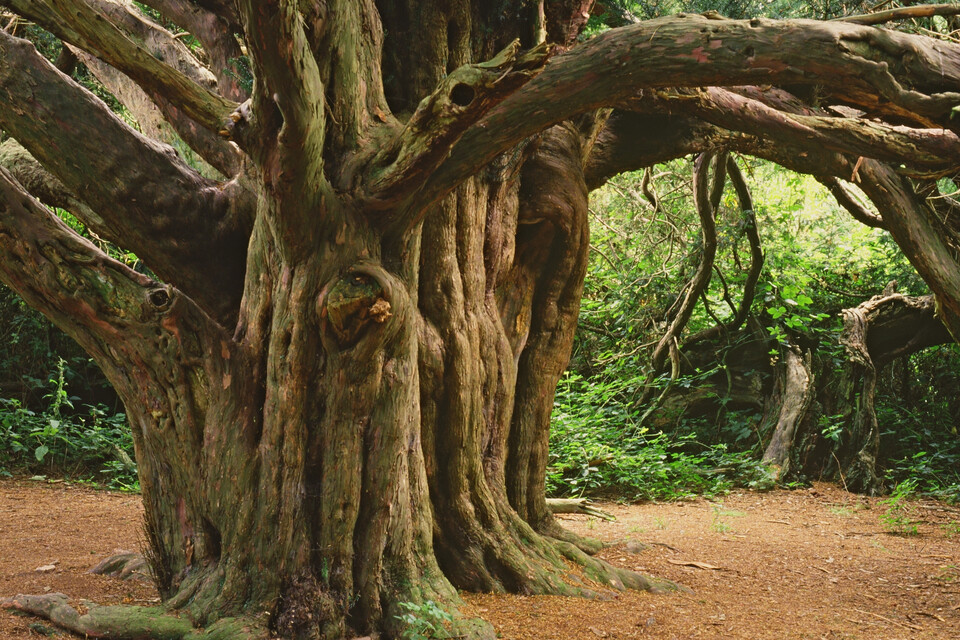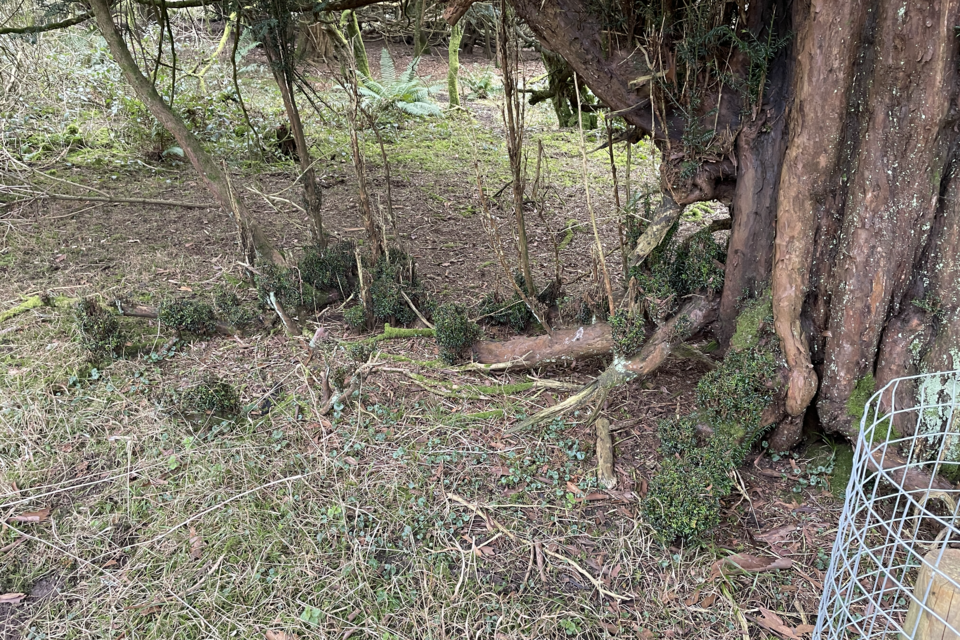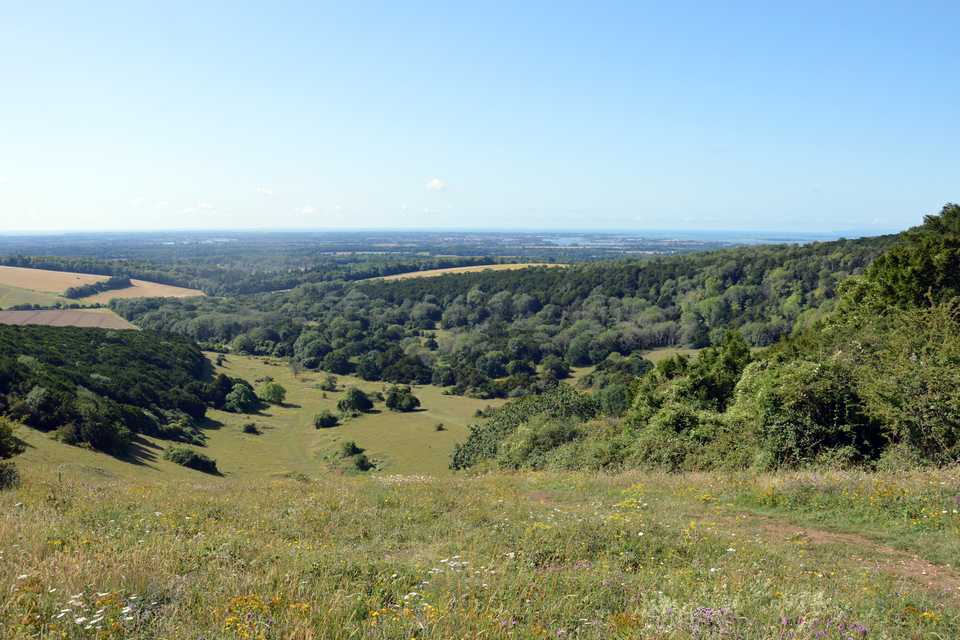Managing deer populations at Kingley Vale National Nature Reserve
Read how Natural England are monitoring and managing significant browsing pressure from deer at Kingley Vale National Nature Reserve (NNR) in West Sussex.
Key facts
- site: Kingley Vale National Nature Reserve, West Sussex
- size: 147.9 hectares of which approximately 99.1ha is woodland
- establishment method: natural regeneration and a small amount of planting of native elm cultivars as part of an ash dieback species diversification project with Kew Gardens
- type: lowland broadleaved woodland; yew woodland; mixed woodland; ancient woodland; wood pasture, parkland or orchard
- funding: Natural England NNR and (site of special scientific interest) SSSI improvement budget, Natural England Evidence Programme, Natural England Protected Sites Strategies and South Downs National Park
- key objective: nature conservation
Tree protection
- main mammal causing damage or risk to trees: deer
- main tree protection method: lethal control
- duration of main tree protection methods: >10 years
A protected site with some of Europe’s oldest yews
Kingley Vale NNR, near Chichester in the South Downs of West Sussex, is a designated SSSI and special area of conservation principally for its yew woodlands.
Spanning 147.9ha, the reserve is managed by Natural England. Of the total area, approximately 99.1ha is woodland, and 48.8ha is nationally important chalk grassland. The yew woodland covers the steep southern slopes of the site’s hillside. The ‘yew grove’ at the base of the site is significant with at least 30 ancient yews, the oldest measuring more than 5 metres in circumference. Some of these are estimated to be between 500 and 2,000 years old, making them among the oldest yews in Europe.
Other tree species present include oak, birch, ash, holly, whitebeam and hawthorn. The woodland includes areas of infilled ancient wood pasture, with remnants of open-grown oaks, indicating a historical grazing landscape that has since developed into closed-canopy woodland.
Over the past decade, numerous ash trees have been felled due to ash dieback – a chronic fungal disease that has affected much of the South Downs since 2012. This has resulted in pockets of open canopy throughout the reserve.

A 750-year-old yew tree at Kingley Vale NNR. Credit: Peter Wakely, Natural England
Monitoring deer browsing pressure and the impacts on woodland health
Kingley Vale NNR is home to 3 species of deer: roe deer, fallow deer, and increasingly, Reeve’s muntjac. Across the broader 200 kilometre2 deer management area, which includes the reserve, deer density is estimated at 17 deer per km2. Each year, yew seedlings are seen in the understory of the mature woodland, but heavy browsing is thought to prevent them from establishing. Fallow deer are the most abundant species and are considered the primary threat raising concerns about the lack of regeneration, though all 3 species contribute to significant browsing pressure.
Signs of deer activity are widespread. Young trees and new growth are heavily browsed and easy to spot across the site. The yew trees in particular show ‘deer topiary’, where repeated browsing sculpts new shoots into hedge-like forms. At the top of the site, bark damage from fallow deer fraying is visible. This behaviour, where deer rub antlers against the tree bark, is especially common during and after the autumn rutting season as males compete for mates.
Beyond the yew woodland, Natural England aims to encourage regeneration in areas where ash stands have been lost to dieback. Some areas have been fenced off to promote natural regrowth, but success has been limited. One concern is that muntjac, which are smaller than other deer species, may be able to squeeze through the mesh fencing. The presence of thicker bramble growth inside these areas suggests that the fencing is working to some degree.

‘Topiaried’ epicormic growth resulting from deer browsing. Credit: Graham Johnstone
Understanding and managing deer across the landscape
Deer at Kingley Vale NNR are managed through contract stalking, carried out carefully and sustainably. Since 2023, the reserve has been part of a Protected Site Strategies (PSS) project led by Natural England, which aims to share knowledge and coordinate deer surveys and management across the broader landscape in collaboration with landowners. It supports the rural economy by offering training, linking with game dealers and developing local supply chains and cold storage for venison.
Visitor numbers have more than doubled since the Covid pandemic. The increase in people and dogs has created what’s called a ‘landscape of fear’ for the deer, altering their behaviour and movement patterns, particularly in the heavily visited southern parts of the site. The PSS project uses thermal drone surveys to assess deer density and distribution. Results show that the fallow deer tend to concentrate in the SSSI woodland areas during the day and then move into the surrounding arable land during the night to feed.
Population control remains at sustainable levels, guided by annual woodland impact surveys that measure browsing pressure. As part of this strategy, night licences are issued and detailed research is collected to inform management decisions. One example, led by Forestry England, involves a dietary analysis of culled deer from nearby wooded SSSIs. Stomach contents are DNA tested at Queen Mary University of London to identify which tree species each deer species prefers, further guiding deer management strategies. Enclosures are also used to monitor regeneration in protected areas.
Trialling physical tree protection methods
Natural England has trialled the use of physical tree protection methods, such as small-scale exclosures (50 metres2) using both Timber and Clipex® to create areas for regeneration, as well as miniature weld mesh exclosures (3m diameter) for annual monitoring.
Clipex® was used to create smaller exclosures across the woodland to understand the effect of browsing. These structures are easier to install than traditional deer fencing, especially in hawthorn woodland and on chalk and flint soils. The plan is to lift and relocate these exclosures every 6 to 10 years to promote pulses of regeneration across the site. One clear example is a 3x2m flexi-net exclosure placed over a fallen yew tree: while growth outside the cage is heavily browsed, growth inside has reached nearly a metre.
Past efforts have also included protecting individual seedlings with flexi-netting tubes, with varying success. Some have successfully supported sapling growth, but many have not. It is important to consider the sustainability and lifespan of your tree guards, and mapping where and how many are deployed for effective management.

Kingley Vale NNR. Credit: Wikimedia Commons
Balancing deer and livestock management
Kingley Vale NNR is actively grazed by both sheep and Belted Galloway cattle. Sheep are primarily kept within the grassland areas using temporary electric fencing. To balance the movement of deer and cattle grazing through the woodland, drop gates and deer leaps have been added to traditional stock fencing.
These gates can be easily adjusted or removed seasonally, allowing deer to move freely between different compartments while keeping cattle confined to designated grazing areas. Using plain wire above barbed wire, combined in some areas with high-visibility electric fencing tape, wooden rails and strategically placed deer leaps, has significantly reduced deer injuries caused by fencing.
There is evidence of past management delimbing or crown-lifting the yew. It is suspected this was done to restrict access of less tolerant livestock to the poisonous yew or to increase light reaching the forest floor. The cattle, leased from a local grazier, are accustomed to grazing amongst yew and actively browse on the yew trees.
To better control cattle movement, the reserve has trialled Nofence GPS-enabled collars that create a virtual boundary to limit movement. While the collars help support a more extensive grazing regime and make locating cattle easier across the large woodland, the team have learnt that the invisible boundaries can fail when cattle are strongly motivated to reach certain areas.
Kingley Vale NNR presents a well-managed example of balancing deer populations, livestock grazing and woodland regeneration. Through targeted monitoring, coordinated control and innovative protection methods, the reserve continues to address the browsing pressures that threaten the young trees on the site.
Useful links
For additional information, consider the following resources:
- Farm Animal Welfare Committee – for an independent report, published in 2022, on the welfare implications of using virtual fences to contain, move and monitor domestic cattle, sheep and goats
- Natural England – for further information on Natural England’s PSS projects
- Forest Research – for a checklist and guidance for planning, constructing and maintaining fences
- National Animal Disease Information Service – for further information on the toxicity of certain plants to livestock